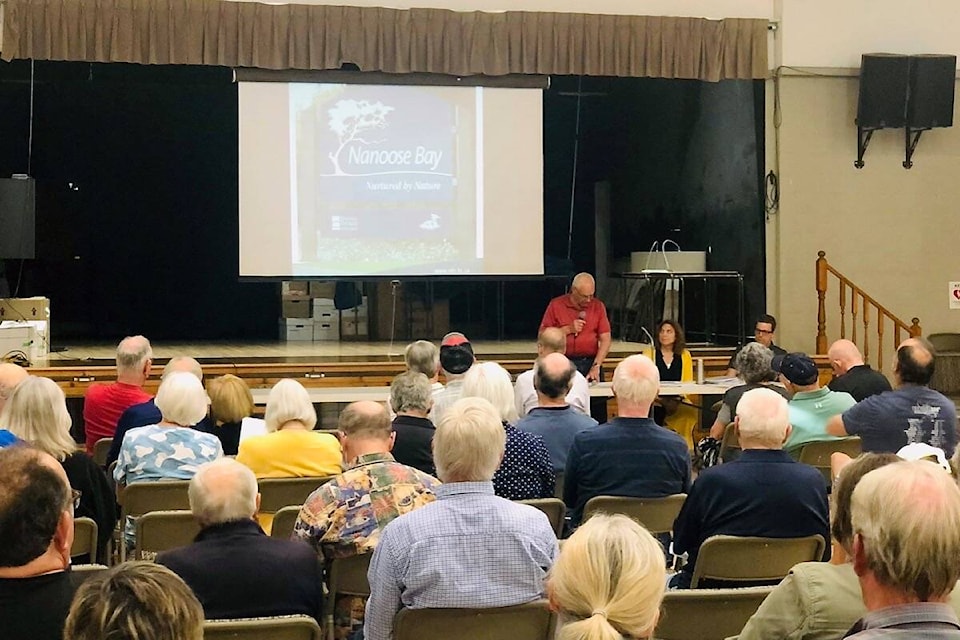Some Nanoose Bay residents were not pleased to see their taxes go up significantly this year.
They vented their anger at an interactive forum held at Nanoose Place on June 23, a meeting that lasted almost three hours.
Close to 60 residents attended the forum to get a better understanding of why their taxes have spiked substantially.
This year, residents face a 20 per cent increase in their taxes with some having to endure more, depending on the assessed value of their properties. The 2022 value of the homes in Area E has gone up 37 per cent over last year.
The total cost of an average home in Nanoose Bay is $1,133,873 this year, up from $824,946 in 2021. Based on the current average residential value, property owners will pay $925 this year, $156 more than the 2021 rates.
Regional District of Nanaimo director of finance Tiffany Moore said if the value of a home is above the average, the property tax would be higher and if it’s below the threshold, it would be less. The residents understood that point, but argued a huge portion of their hike comes from increasing RDN local services taxes. And they fear it’s going to be more next year when they’re asked to pay for Ravensong pool services.
Residents are also obligated to pay a separate tax for the Nanaimo Regional General Hospital, which this year has gone up by more than 45 per cent. Every property owner from Bowser to the southern portion of Nanaimo will pay $31.17 per $100,000 assessed property value, $10 more from 2021. The goal is to build up reserves to reduce reliance on debt and allow the Nanaimo Regional Hospital District to meet its 40 per cent obligation to pay for large priority projects required in the region. The province covers the 60 per cent balance of the total costs.
The RDN local services rates, as well as the Nanaimo Regional General Hospital, the residents argued, are not necessarily linked to the assessed value of their property.
“This is a progressive tax issuing process where people are viewed to be wealthier by virtue of the value of their home, are paying more for the same services,” one resident commented.
Some residents said they are on a fixed income and will have a hard time coming up with the finances needed to pay for their escalating taxes. They are upset that none of the RDN’s board of directors raised any concerns about the increase.
“What if this was a 30 per cent increase in taxes, are they all going to vote unanimously to support this level of taxation?” said one resident. “Not one of them dissented. Not one.”
The City of Parksville residents’ taxes went up by 3.5 per cent this year but rates for the RDN services have gone down by $27 this year. Nanoose Bay residents wondered why.
Moore explained a municipality can have a single mill rate but the regional district doesn’t as it has 107 different services that they provide.
“Each property is unique and will participate in some of those 107 different services” said Moore. “That’s part of the confusion. The other part of the confusion is when taxpayers are looking at their property tax notices and their gross property taxes. They take last year’s and this year’s and they calculate what the percentage is. And that’s different based on what your increase in your assessed value. Basically each property is unique.”
Moore said the RDN does have a mill rate but it has declined. She pointed out, however, it doesn’t mean the taxes will drop.
“The mill rate gets applied to the assessed value of the property,” said Moore. “So if your assessed value goes up even though the mill rate has gone down, your taxes go up.
Residents do have an option to apply for a property tax deferment, which carries two per cent per annum in interest. If the property is sold, the total deferred property tax amount and interests incurred will need to be paid.
